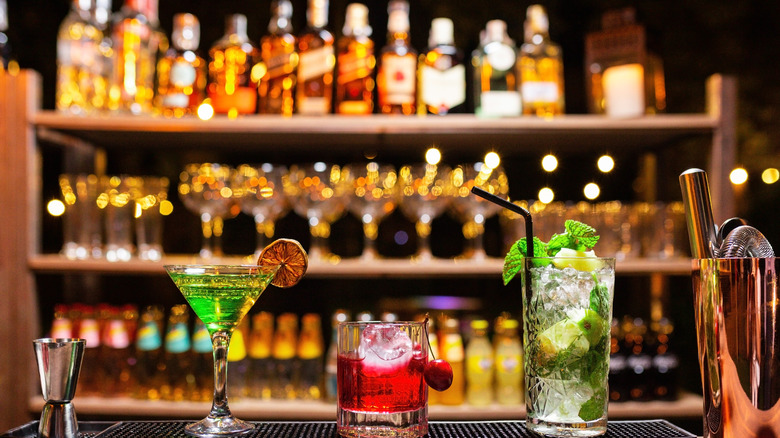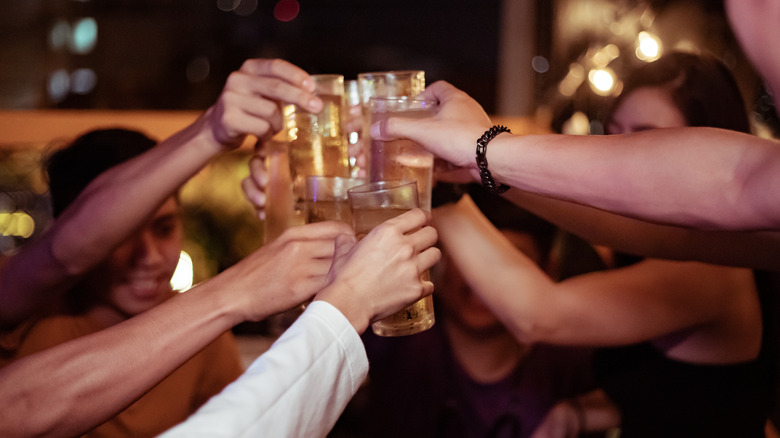What Bottom-Shelf Liquor Really Means
We've all been there, sitting at the bar and witnessing the bartender effortlessly pull out a bottle from below. But hold onto your Grey Goose because that's the bottom-shelf liquor they just reached for, aka the cheaper stuff that is typically stored on a shelf below the bar. Trying to figure out who designed this system in the first place is a real conundrum. The concept behind the bottom shelf is simple. It provides easy access for shots or cocktails and is designed to speed up the drink-making process by being within the bartender's reach. In case you were wondering, well liquor is just another term bartenders use for bottom-shelf liquor.
On the other hand, top-shelf liquors refer to more expensive bottles like Belvedere, Patron, Grey Goose, Johnnie Walker, and so on. You might assume that the top shelf dominates the market, but the reality, as reported by Mel Magazine, is quite different. Depending on who you ask, the cheaper bottles can outsell the most premium top-shelf liquors. As for the bottom shelf, you can find brands like Kamchatka, Old Crow, Taaka, and many others. The intriguing thing about bottom-shelf liquors is that there are no strict rules governing what belongs there; it's entirely up to the owner's or bartender's preference.
Who makes the bottom-shelf liquors?
If you're wondering where bottom-shelf liquors come from, look no further than your top-shelf favorites. Distillers sometimes use the same recipe with minor tweaks and produce it at the same place where they distill big-label liquor brands. And just like other industries (think Pepsi, Burger King, etc.), these larger brands end up acquiring smaller brands, retaining the same name due to brand loyalty. With major brands like Sazerac selling multiple different lower-shelf brands, including Buffalo Trace, 1792, Seagram, and Fireball, it's no wonder it is all so confusing and well under the radar.
Higher-end liquors tend to receive price discounts through special promotions, catering to their niche market. Meanwhile, the price of lower-end alcohol stays relatively consistent, benefiting both the buyer and the seller. This makes it worthwhile for bigger brands to create their own version of bottom-shelf liquor or simply acquire the competition. As for the stigma surrounding lower-end or bottom-shelf liquor, that's just due to its advertising or lack thereof. We say give the bottom shelf a chance and avoid the same mistakes everyone makes when buying alcohol.

